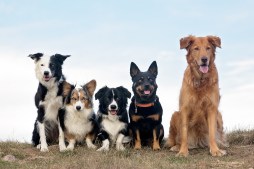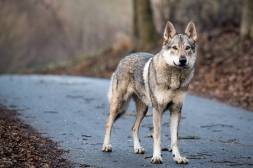Training Techniques That Help Dogs Avoid Dangerous Wildlife Situations

Dogs are naturally curious animals, and when they explore outdoors, they may encounter wildlife that could pose dangers. It’s essential for pet owners to train their dogs effectively to recognize and avoid potentially hazardous wildlife situations. This article discusses practical training techniques that help keep your dog safe while enjoying outdoor adventures together.
Understanding Wildlife Risks for Dogs
Before starting any training, it’s important to understand the types of wildlife your dog might encounter in your area. Common risks include encounters with snakes, coyotes, porcupines, skunks, or even larger animals like deer or bears depending on your region. Knowing these threats allows you to tailor training exercises that prepare your dog to respond appropriately when faced with such animals.
Teaching Recall Commands Consistently
One of the most effective defenses against dangerous wildlife encounters is a reliable recall command. Teaching your dog to come back immediately when called can prevent them from approaching or chasing wild animals. Use positive reinforcement techniques such as treats and praise during practice sessions in various environments so your dog learns to respond promptly despite distractions.
Using Desensitization and Counter-Conditioning
Desensitization involves gradually exposing your dog to stimuli associated with wildlife at a distance where they remain calm. Over time, this exposure helps reduce fear or excitement responses that might lead them into danger. Counter-conditioning pairs these exposures with positive experiences like treats or playtime so the dog associates the presence of wildlife scents or sounds with good things instead of curiosity-driven approaches.
Implementing Leash Training for Control
Keeping dogs on a leash during walks or hikes near wild habitats provides physical control preventing sudden chases toward animals that could be harmful. Leash training also reinforces boundaries and helps reinforce commands such as ‘stay’ or ‘leave it.’ If you allow off-leash activities in safe areas only after thorough obedience training, always assess surroundings carefully before releasing control.
Recognizing Warning Signs and Educating Yourself
Educate yourself about local wildlife behaviors and warning signs indicating an animal’s presence like tracks, scat, sounds, or disturbed vegetation. Train your dog to avoid sniffing around suspicious areas and recognize cues from their body language signaling alertness toward potential danger nearby. Being proactive through knowledge reduces chances of accidental confrontations between dogs and wild creatures.
By incorporating these training techniques into regular routines, pet owners can significantly reduce the risk of dangerous encounters between dogs and wildlife. Prioritize safety by understanding risks specific to your area while reinforcing commands that promote caution during outdoor activities. A well-trained dog not only enjoys nature but returns home safely every time.
This text was generated using a large language model, and select text has been reviewed and moderated for purposes such as readability.











